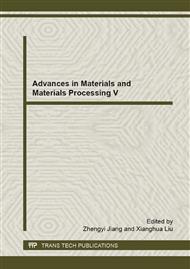p.766
p.770
p.773
p.777
p.781
p.786
p.795
p.800
p.804
Numerical Simulation of the Dynamic Stress Field Based on DEFORM in the Friction Stir Welding of Al Alloy
Abstract:
Friction stir welding (FSW) was a new solid-state metal-joining method and force played an important role in the weld forming. The study of dynamic stress field helped to understand the forming mechanism of FSW and residual stress after welding. Regarding FSW of aluminum alloy, this paper built the finite element model which was based on DEFORM-3D software and achieved numerical simulation of the dynamic stress field in the FSW process. The results indicate that the peak of stress field appeares in the front side of weld and distributed asymmetrically along the center of the weld; the axial force playes an important role to the distribution of stress field, the the distribution of stress field becomes more intensive as the downforce largen; the stress gradient of the advancing side of weld changes larger than that of the retreating side; the stress near the shoulder experiences twice peak.
Info:
Periodical:
Pages:
781-785
Citation:
Online since:
March 2015
Authors:
Price:
Сopyright:
© 2015 Trans Tech Publications Ltd. All Rights Reserved
Share:
Citation:


